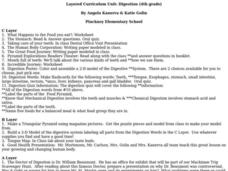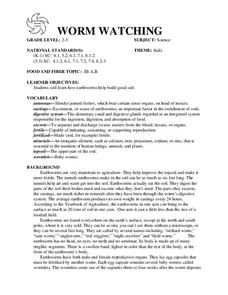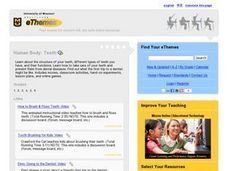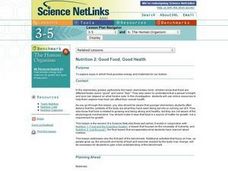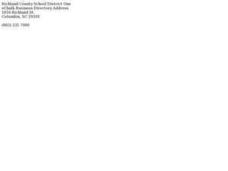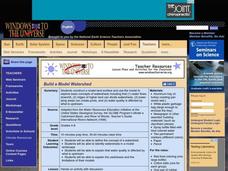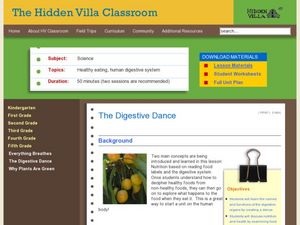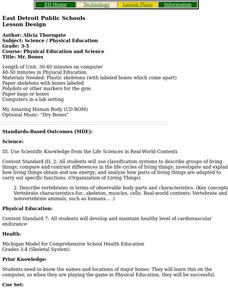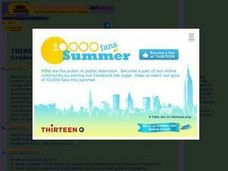Curated OER
Organ Systems
Students state the name of major body systems, They identify what each system does and list the major organs in each system. In addition, they complete a puzzle matching organ systems to organ function.
Curated OER
Human Population's Response to Re-emerging and Emerging Infectious Diseases
Students examine the human population response to microbial diseases. In this disease lesson students observe population trends, write about a scientist and evaluate and defend current treatments for infectious diseases.
Curated OER
Can Acids and Bases Remedy the Body?
Young scholars try to cure an upset stomach. In this acids and bases in the body lesson, students create a upset stomach with a vinegar and water solution, then use antacids and home remedies to attempt to restore pH balance to the...
Curated OER
Digestion
Fourth graders answer the question what happens to the food you eat? They complete a worksheet about the food you eat. They discuss the different types of teeth that we have. Students complete digestion poster in which they color and...
Missouri Department of Elementary
How Much Does Smoking Really Cost?
Following a brief survey about tobacco, scholars examine a fact sheet to answer questions about the substance. A practice page challenges the class to determine the cost of the habit using money math. Pupils discuss their findings...
Curated OER
The Human Skeletal System: Inside and Out
Students study bone size, structure and shape. They use various geometrical shapes to make a skeleton and produce a poster depicting the skeletal system and its functions. They arrange the pictures into the five sections, glue on...
Curated OER
Lub Dub
Learners name the vessels and parts of the heart. They trace the path of blood through the heart. Students examine the function of the circulatory system. They recognize the differences between a hear when the body is at rest opposed to...
Curated OER
Circulatory and Respiratory Systems
Eighth graders are able to write a paragraph describing each system based on the information retrieved in class. They trace a route from Holly Springs, MS to Greenwood using the maps that they were given. Students discuss the role of...
Curated OER
Oxygen Cycle
Students run clockwise around a track in the gym, pretending they are the blood that carries oxygen through the body. They go to the "mouth" station where they take three breaths and pick up an object that represents oxygen. Students...
Curated OER
WORM WATCHING
Students investigate how earthworms help build good soil. They examine the worms carefully to find the ringlike segments and swollen band at the front of the earthworm's body. Students take turns dampening the soil every day and adding...
Curated OER
The Gift of Life - Day 2: "Cell & Organelle Time to Tell" and "World in Color" (Chapters 2-4)
Students complete a cell biology lesson and a color lesson based on The Giver. In this biology and reading comprehension lesson set, students examine cells using microscopes. They look at the organelles and listen to How Much is a...
Curated OER
H2O in Us
Students discover through this activity that all organisms are composed of water. They find that 70 percent of their bodies are made up of water that is in thier cells and blood, and not free-flowing throughout their body.
Curated OER
Pump It Up!
Students design a pumping device that will effectively pump fluid through a model "cardiovascular system." They explore the effects of too much and too little pressure on a circulatory system.
Curated OER
Human Body: Teeth
Students examine the structure of teeth, the different types of teeth and their functions. They discuss how to take care of their teeth and how to prevent dental diseases by viewing movies, participating in hands-on experiments and...
Curated OER
Good Food, Good Health
Learners investigate how food provides energy for the human body. In this physical health instructional activity, students access online resources to identify how certain foods can affect their health. Learners discuss how many servings...
Curated OER
Whst Makes You Tick?
Eleventh graders explore the major organs of the circulatory system. In this circulatory system lesson, 11th graders create, identify and describe parts of the system. Students view a list of major organs and predict what their job is....
Curated OER
Build a Model Watershed
Collaborative earth science groups create a working model of a watershed. Once it has been developed, you come along and introduce a change in land use, impacting the quality of water throughout their watershed. Model making is an...
Curated OER
The Digestive Dance
Students read food labels to compare healthy verses non healthy food and then use diagrams to create a poster of the digestive system. In this food lesson plan, students move the food down the digestive track along the digestive system.
Curated OER
The Human Body: Focusing on Respiratory and Circulatory Systems
Students study the components and functions of the respiratory and circulatory systems. They take blood pressure using a stethoscope and investigate ways to maintain a healthy respiratory system.
Curated OER
Digestion - Part 2
Students read a text on digestion and learn new vocabulary as they read. In this digestion lesson plan, students also complete a picture chart to show the digestive process.
Curated OER
Bones, Bones, and More Bones
Young scholars describe the functions of bones in the human body. They describe the make up of a bone. They engage in a series of wonderful hands-on activitiies that reinforce learning of bones and the skeletal system.
Curated OER
Mr. Bones
Students play CD-ROM game My Amazing Human Body, and participate in relay game in Phys. Ed. where they put together skeleton on which body parts are labeled.
Curated OER
As Good As Gold
Students find examples of the Golden Ratio on the human body through measurement. Additionally, students learn about the use of the Golden Ratio and the Golden Rectangle in art and architecture. A very interesting lesson for the students!
Curated OER
There's Gold in Them Thar Ratios
Students draw a model of the bunny problem which generates the Fibonacci Sequence, spirals generated from golden rectangles and golden triangles; identify the golden ratio in the human body, and find the Fibonacci numbers in nature.



